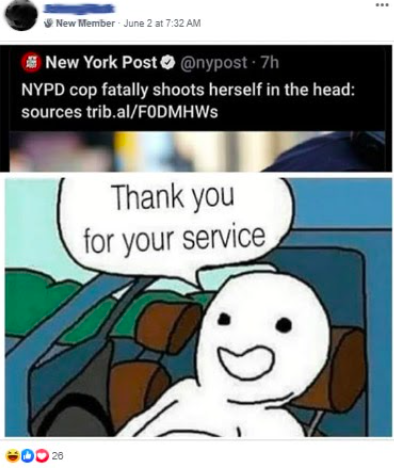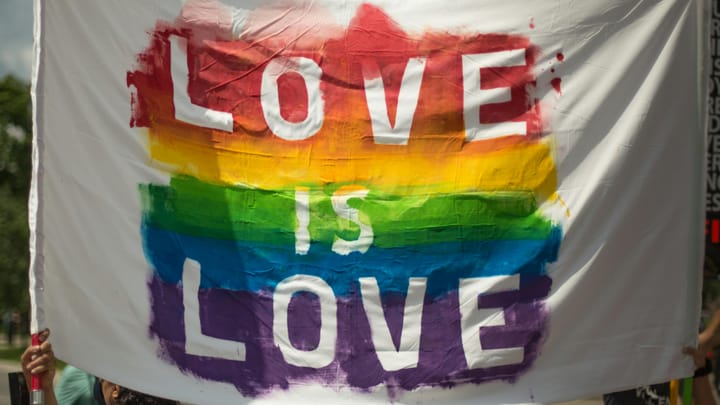Are “outside agitators” infiltrating Black Lives Matter protests?

A few minutes every morning is all you need.
Stay up to date on the world's Headlines and Human Stories. It's fun, it's factual, it's fluff-free.
Since last week, protests have erupted across the United States in the wake of the killing of George Floyd, a black man, by police officers. The protests, led by the Black Lives Matter (BLM) movement, are intended to bring greater attention to acts of police brutality perpetrated against people of color. Yet, in multiple cities, the protests have been intensified by rioting and the destruction of property.
President Donald Trump, state-level politicians and members of American law enforcement have placed the blame for the protest violence on outside groups. While there is evidence that extremist groups are using the protests as cover for a violent agenda, accusations of “outside agitators” have often been used in American history to delegitimize protests for black causes.
Protests turn to violence and destruction
Protests have spread from Minneapolis, the Minnesota city where George Floyd was killed, to cities across the US and even to other countries. As those protests have intensified and the police response has ratcheted up, multiple cities have seen rioting that has resulted in property destruction, looting and even police deaths.
In addition to Floyd, other black deaths at the hands of police officers – including Breonna Taylor’s earlier this year – have led to calls for police reforms and more arrests. Yet those grievances are at risk of being buried by stories of rioting.
A recent public opinion poll showed that, while most of the country disapproves of Trump’s response to the protests, a majority of registered voters do support “calling in the US military to supplement city police forces.”
On the local level, it has become a common belief among police forces that groups of outside agitators have traveled across state lines to turn the protests into violence against police officers.
Others view the violence as a natural reaction to an overzealous police force that has turned to tear gas and violent retaliation against protestors. Amid protests of police violence, the at times brutal police response, documented by videos spread online, has received fierce criticism.
Are the George Floyd protests being infiltrated by outside agitators?

Multiple groups have been accused of either infiltrating BLM or of using the protests over Floyd’s killing for their own anti-police agenda. Among the regularly accused groups are white supremacists, “Antifa” (short for anti-fascist), Boogaloo boys and anarchists.
Trump has made it clear that he believes Antifa is the worst of the agitators, tweeting on May 31 that “The United States of America will be designating ANTIFA as a Terrorist Organization.” Attorney General William Barr shares Trump’s view, claiming protest violence was “instigated and carried out by Antifa.”
In the Pacific Northwest, the Seattle Police Guild has accused anarchists of instigating attacks against police officers, while conservative talk radio host Jason Rantz says Antifa have caused the destruction of public property.
However, the FBI, which is part of the Department of Justice that Barr oversees, has found no evidence to support these claims. Furthermore, experts on extremist groups have questioned whether Antifa, which is less a group than a philosophy and has no central leadership, has participated in the violence at all.
A wolf clothed as a protestor
On June 2, it was reported that Twitter had suspended a Twitter account run by a white supremacist group. The account falsely claimed to be part of the Antifa movement and had called for violence at the Floyd protests. Before being suspended, the account had been shared by Donald Trump Jr. on Instagram as proof that the Antifa movement was violent.
According to a Twitter spokesperson, the account was suspended both for being fake and for inciting violence.
White supremacists and Antifa have regularly come into conflict, including at the 2017 Charlottesville protests, which resulted in the death of Heather Heyer by a white supremacist.
In a separate incident, the FBI arrested three men – Andrew Lynam, Stephen Parshall and William Loomis – who were plotting a violent disruption at a BLM protest. All three men have backgrounds in the US military and are members of the boogaloo movement, a right-wing group that advocates for a second civil war and has ties to white supremacist groups.
The three men had met at the anti-lockdown protests in April and May and had originally intended to use the May ReOpen Nevada protest for a disruption intended to cause a fight between the police and protestors. When that didn’t happen, the men regrouped for a similar attack during the current BLM protests.
Many within the Boogaloo groups openly advocate for or celebrate violence against police officers, who Boogaloo Boys consider defenders of a tyrannical state. Online, their groups often feature anti-police memes alongside pro-Second Amendment posts.

The myth of the outside agitators
Political groups and lobbyists often disguise their role in provoking protests against or for a particular cause – a tactic known as astroturfing. As recently as this year’s anti-lockdown protests, there has been evidence that public protests are at times fueled by groups with separate political goals. But, as of yet, there is no evidence that the BLM protests are anything but what they say they are.
Legitimate protests for the rights of people of color in America have, historically, faced accusations that outside groups are manipulating them or that the protests are manufactured purely for political gain. In the 1950s and 60s, the civil rights movement in the South was frequently written off by opponents as agitation from Northerners and Communists.
James Baldwin, a celebrated African American author and social critic, wrote critically of this phenomenon in his 1961 collection of essays, “Nobody Knows My Name: More Notes of a Native Son.”
“When the South has trouble with its Negroes – when the Negroes refuse to remain in their ‘place’ – it blames ‘outside agitators’ and ‘Northern interference.’ When the nation has trouble with the Northern Negro, it blames the Kremlin.”
This practice served the dual purpose of denying black anger while giving credit for black activists’ victories to other, white-led groups.
Have a tip or story? Get in touch with our reporters at tips@themilsource.com
Sign up for daily news briefs from The Millennial Source here!




Comments ()